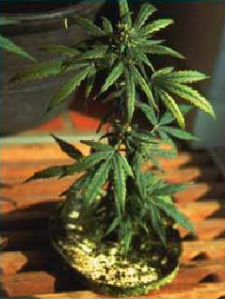Phosphorus summary
Phosphorus plays an important role in all living organisms and forms an essential element in plant and animal foodstuffs. It has a key position in cell metabolism and the plant’s total energy transfer. It is also a building block for the cell walls, DNA and all sorts of proteins and enzymes. The availability of phosphate is essential for young plants since approximately three-quarters of the total amount of phosphorus absorbed by the plant occurs before it is a quarter of the way through its life cycle! The biggest concentrations of phosphorus are also found in the self-developing plant parts such as the roots, side shoots and vascular tissue.
Phosphorus is a non-metal, chemical element which, because of its nature, is not found in its pure form because it is extremely reactive. It was discovered in 1669 by an alchemist who was condensing urine in an attempt to make gold. Phosphate compounds are rarely found in nature in the form that plants can utilise. Ground bones (bone meal) were previously used as fertilizer and they were later treated with sulphuric acid which made the phosphates a lot easier to absorb. In the second half of the 19th century, guano, a natural phosphate fertilizer, was dug up on a large scale and used in farming. These raw materials are currently obtained from rock phosphates which are phosphate rich ores. Some of the locations where this is mined include Morocco, Algeria and North and South America. In order to make rock phosphates suitable for use in agriculture and market gardening they are first acidified and purified. In alternative agriculture they are first finely ground or heated and are then available to the trade as expanded granules.
- In the beginning the plant has a dark green color but it’s a different dark green (blue-green) from that of a K deficiency.
- Growth in height and the development of side shoots are inhibited.
- After 2 to 3 weeks dark purple/black necrotic spots form on the older and middle-aged leaves causing them to deform.
- The purple/black necrosis later spreads out to the leaf stalks. The leaves turn, curl badly and die.











You must be logged in to post a comment.